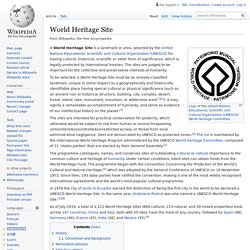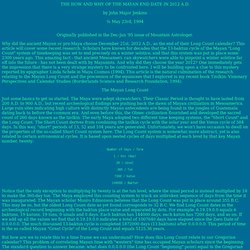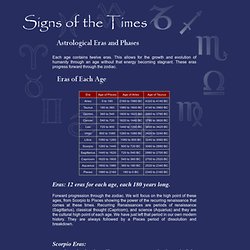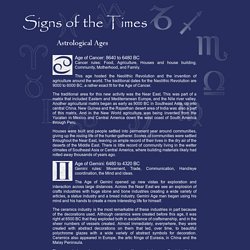

What are the greatest lessons you have learned from history? James Van Der Zee: Documenter of 1920s Harlem. In 1923, a young African American couple dressed in their Sunday best stepped into a small photography studio on Harlem's 135th Street.

Inside, an eager black man with wide-set eyes took a long look at them. He smiled and seemed to watch how they smiled back. As he guided them toward the back room, he asked them where they were from, where they lived, how long they'd been married. He sat them before a fireplace painted on the wall, then went to a closet, pulled out a fur, and draped it on the woman's shoulders.
He glanced at the man's arm and tucked in a fraying edge of sleeve. Harlem's Finest Face. THE ORIGINAL MEANING OF THE "N" WORD. The word "nig...

" used to be the most revered and sacred word in the universe. It was the "devine epithet," and the people who began using the mother of all words that originated from this word which was sullied by the British, were the ancient Egyptians or better, the Khemites, who called their land, "Khemet" or "The Black Land," and also used the name, "Ta-merri" or "The Beloved Land. " What is true and valuable in the Southern tradition.
World Heritage Site. Place listed by the UNESCO as of special cultural or natural significance A World Heritage Site is a landmark or area, selected by the United Nations Educational, Scientific and Cultural Organization (UNESCO) for having cultural, historical, scientific or other form of significance, which is legally protected by international treaties.

The sites are judged to be important for the collective and preservative interests of humanity. To be selected, a World Heritage Site must be an already-classified landmark, unique in some respect as a geographically and historically identifiable place having special cultural or physical significance (such as an ancient ruin or historical structure, building, city, complex, desert, forest, island, lake, monument, mountain, or wilderness area[1][2]). History. Ancient Quotes Polybius Quotations. Quotes from Ancient Times What the rich and famous and wise said Thoughtful and attentive words to contenplate learn from Note: Throughout history the rich, famous and wise have said things that have been recorded in the form of quotes.

It is the study of these quotes that give insight into life. Polybius (205 BC - 118 BC), Greek historian. Humanities Resources - Cornerstone College (Mt Barker, SA) 7 HISTORY. How the Domino Effect Has Shaped History. Aeon. Although the term aeon may be used in reference to a period of a billion years (especially in geology, cosmology or astronomy), its more common usage is for any long, indefinite, period.

Aeon can also refer to the four aeons on the Geologic Time Scale that make up the Earth's history, the Hadean, Archean, Proterozoic, and the current aeon Phanerozoic. Astronomy and cosmology[edit] In astronomy an aeon is defined as a billion years (109).[2] Roger Penrose uses the word aeon to describe the period between successive and cyclic big bangs within the context of conformal cyclic cosmology. Eternity or age[edit] What-when-how — In Depth Tutorials and Information.
Bygone Days. Long Ago. Cultural References. Seven Generations. Histoire. LORE. Geo Loco. World One People Too. News and Events Year by Year: 1900-2013. World calendars. Hang on to your Java I finally decided to dip my toe into the ocean that is the mish-mash of calendars used in Indonesia.

Along with their traditional systems, they’ve also added the Gregorian, the Hindu, and Muslim Calendars. Add to that that they have two names for weeks, months, years and so on (one is more formal, the other informal), and you wind up with one big mess. At least I do. I’m sure the people in Indonesia have little problem wading through it all. Why 2012? By John Major Jenkins.

Historical research - early 20th century. Cartographies of Time: A History of the Timeline (9781568987637): Anthony Grafton, Daniel Rosenberg: Books. Cartographies of Time: A Visual History of the Timeline. By Maria Popova A chronology of one of our most inescapable metaphors, or what Macbeth has to do with Galileo.

I was recently asked to select my all-time favorite books for the lovely Ideal Bookshelf project by The Paris Review’s Thessaly la Force and artist Jane Mount. Signs of the Times: Astrological Eras and Phases. Each age contains twelve eras.

This allows for the growth and evolution of humanity through an age without that energy becoming stagnant. These eras progress forward through the zodiac. Eras: 12 eras for each age, each 180 years long. Forward progression through the zodiac. Signs of the Times: Astrological Ages. Age of Cancer: 8640 to 6480 BC Cancer rules: Food, Agriculture, Houses and house building, Community, Motherhood, and Family.

This age hosted the Neolithic Revolution and the invention of agriculture around the world. The traditional dates for the Neolithic Revolution are 9000 to 6000 BC, a rather exact fit for the Age of Cancer. The traditional area for this new activity was the Near East. Astronomical Insignificance of Maya Date 13.0.0.0.0. - by Vincent H. Malmström. In effect, stated in terms more familiar to those of us using the Gregorian calendar, it would be like saying that the beginning of the present world took place on a day numbered “4” which fell on a Saturday about the middle of December, with no thought being given to what had transpired on the first six days of the week or during the first eleven months of the year! This seeming non sequitur appears not to have disturbed either the Olmecs or the Maya. In 1582 when the Dutch chronologist Joseph Scaliger devised a similar system for counting days consecutively from a fixed beginning point, he made sure that his tally conformed to the logic and constraints of the western European culture to which he was an heir.
Accordingly, his count began on the first day of the week (Sunday) and on the first day of the first month of the year (January 1). Indeed, in the book cited above, Edmonson went so far as to totally reverse the explanation for how the Long Count came into being. References: Historic Maps. 40 maps that explain the world. By Max Fisher By Max Fisher August 12, 2013 Maps can be a remarkably powerful tool for understanding the world and how it works, but they show only what you ask them to. So when we saw a post sweeping the Web titled "40 maps they didn't teach you in school," one of which happens to be a WorldViews original, I thought we might be able to contribute our own collection.
Some of these are pretty nerdy, but I think they're no less fascinating and easily understandable. A majority are original to this blog, with others from a variety of sources. I've included a link for further reading on close to every one. Teaching Social Studies. Teachinghistory.org. Reading Like a Historian Curriculum. Center for History and New Media - Scribe. About New! Scribe 3.5 is available: Download Scribe 3.5 New Features in Scribe 3.5 Improved export to Zotero - Read about Scribe to Zotero Transition Cleans up undefined empty cards on import from previous versions Scribe is a free cross-platform note-taking program designed especially with historians in mind.
Main Features. Blog - NASA Jet Propulsion Laboratory. Gandhi, Mohandas Karamchand (1869-1948) Upon his death, Mohandas K. Gandhi was hailed by the London Times as ‘‘the most influential figure India has produced for generations’’ (‘‘Mr. Gandhi’’). Gandhi protested against racism in South Africa and colonial rule in India using nonviolent resistance. A testament to the revolutionary power of nonviolence, Gandhi’s approach directly influenced Martin Luther King, Jr., who argued that the Gandhian philosophy was ‘‘the only morally and practically sound method open to oppressed people in their struggle for freedom’’ (Papers 4:478). King first encountered Gandhian ideas during his studies at Crozer Theological Seminary. Songs and the Civil Rights Movement. “Letter From Birmingham Jail” The excerpt below is from Martin Luther King's Why We Can't Wait, annotated by Michael Wilson as part of his honors thesis research at Stanford University.
For our PDF, click here. April 16, 1963 While confined here in the Birmingham City Jail, I came across your recent statement calling my present activities "unwise and untimely. " Seldom do I pause to answer criticism of my work and ideas. King Institute Encyclopedia. King Institute Encyclopedia. The Chinese Revolution of 1949 - 1945–1952. China 1911: The Birth of China's Tragedy. A New Chinese Export: Labour So Cheap. , an 18-year-old factory worker from a village in Fujian. "It was impossible to sit down. English Dissenters: Ranters. Russian Revolution - Dr. Hartnell's Nutty the A.D.D. Squirrel.
A Brief Review of Ayurvedic Concepts. Johann Georg Faust. Dr. The Cultural War. This is what living in the Viking age looked like. Center for the Study of the First Americans. Legends of America - American History, People, Legends, Old West, Travel Destinations, and Lots More. For the Nostaligic and Historic Minded. HISTORY 41: THE AMERICAN COLONIES. United States Constitution. The James A. Garfield Administration: 1881. Who Was Rosie the Riveter?: The American Factory Women of World War II. List of cities in the Americas by year of foundation. Historical urban community sizes. By the Time I Get to Woodstock: Peace & Love in Retrospect. “By the time we got to Woodstock, we were half a million strong/And everywhere was song and celebration” - from “Woodstock” by Joni Mitchell There has never been a shortage of folks to talk to about being at Woodstock.
What Happened at Woodstock. Woodstock's 7 Greatest Performances. Woodstock Bands & Performers, Woodstock Lineup, Woodstock 1969 Set List & Playlist. Various Artists - Woodstock Two (1971) SUNN Vancouver Historic Quartiers. For the Fallen Poem by Laurence Binyon. First world war: For the Fallen, a poem by Laurence Binyon. Organizations Related to WW1 Remembrance, Research and Study. Creation of the Department of Homeland Security. La vie quotidienne au Moyen Âge. Medicinal Spices Exhibit - UCLA Biomedical Library: History & Special Collections. Doctors, Healers, and Health: The State of Medicine in the Old West.
Full text of "A History Of Medicine" Live Long and Prosper. One World. Societal Gumbo. Modern Culture. Poiemaeia. Mot juste. Rhapsodos. Other Autre. Tyme. Calendrica. Research Nodes. Reference. New Learning.